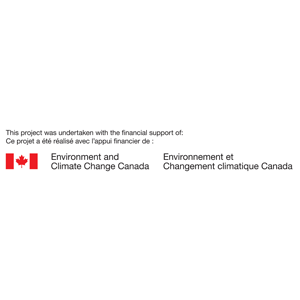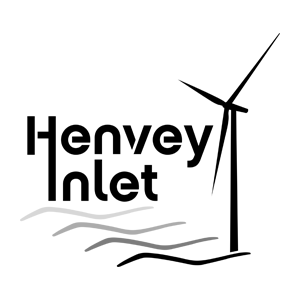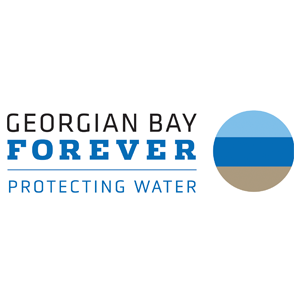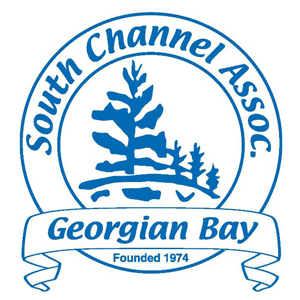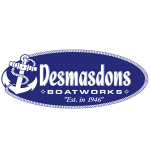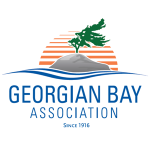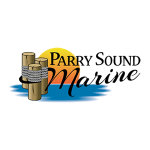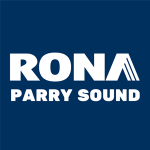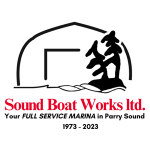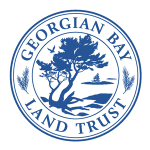In 1997, the Moon River Walleye Association began a Walleye culture and stocking operation to assist with the rehabilitation of the Moon River Walleye fishery. In addition to rehabilitating spawning beds, stocking of Walleye has been identified as a primary tool for accelerating the rehabilitation of Walleye populations and ensure they remain a self-sustaining population. Between 2006 and 2011, the project was carried out annually, with a reported 4.45 million fry and almost 5000 summer fingerlings planted. The project was continued in 2006 under the banner of the Eastern Georgian Bay Stewardship Council.
Moon River Walleye Culture Efforts, 2006 to 2011
In 2006, a total of 170 Walleye were captured. Based on information collected during netting, the size class structure showed that recent Walleye year classes were absent, and less than 20 percent of Walleye sampled were smaller than 50 cm in total length. In healthy populations, that size classes would be much more abundant. In addition, there was a significantly low number of females captured. Of the 40,000 fry planted into the Moon River Cabins’ pond, 257 were reared to the summer fingerling stage and approximately 180,000 fry were planted into Arnold’s Bay in July, 2006.
In 2007, the Moon River project continued with EGBSC, and 122 Walleye were caught. In addition, 322 Walleye were caught at a site on the north shore. In 2007, there was a predominance of small size male, which indicated there had been a recent successful reproduction and recruitment to the Moon River walleye spawning population. Although many factors may have affected the success, it was likely attributed to the flow in the Moon River in 2007. In total, approximately 2.5 million eggs were collected, of which 1.4 million were estimated to have successfully hatched. All fry were deposited in the Arnold’s Bay and Moon River Bay areas, and in June, approximately 612 summer fingerlings were planted in Arnold’s Bay.
In 2008, there were high flow volumes on the Moon River, and the project was not carried out due to safety concerns.
In 2009, 124 walleye were caught, and approximately one million Walleye eggs were collected. Of those, about 820,000 were successfully incubated to the fry stage. Approximately 550,000 fry and 433 summer fingerlings were stocked into the Moon River. In addition, approximately 180,000 eggs were successfully incubated at a private hatchery. Of these 10,000 were raised to the summer fingerling stage, and about 5,700 summer fingerlings were planted into the Moon River. The remaining 170,000 fry were stocked in a cordoned-off bay at Tadenac Bay, as part of an experimental culture project.
In 2010, 361 walleye were caught, and approximately one million Walleye eggs were collected. Approximately 700,000 fry and 4,926 summer fingerlings were planted into Arnold’s Bay of the Moon River.
In 2011, netting efforts were interrupted by high flows that made netting activities difficult and dangerous. EGBSC was unable to successfully at collect any eggs, and no rehabilitative plantings occurred in 2011.
Walleye Culture Efforts in Tadenac Bay, 2009 and 2010
Walleye were once present in Tadenac Bay. In 2006, the Walleye spawning bed at Tadenac Lake was restored, and there was an opportunity to plant Walleye fry within the Tadenac Lake area. Tadenac Bay has a variety of inlets and bays of suitable shape, size and habitat for Walleye rearing. In order to rear the Walleye fry, the bays and inlets would be cordoned off with a fine mesh net. The Tadenac Fishing Club has exclusive rights to Tadenac Bay, so there would be no danger to the nets being damaged by boat traffic. Tadenac Fishing Club members abide by self-imposed fishing regulations, and it was agreed that no Walleye would be harvested while rehabilitation efforts were underway. It was decided that Tadenac Bay would be used as an experiment to raise Walleye fingerlings, and that lessons learned from the project would be useful in conducting future Walleye rehabilitation elsewhere.
In May of 2009, 150,000 Walleye eggs close to hatching were placed in a cordoned-off embayment of Tadenac Bay. This impoundment would create an area to rear Walleye to the summer fingerling stage. The purpose of the net would be to keep predatory fish out of the shallow waters of the embayment as they emerged from deeper, over- wintering habitat. In order to assess survival, visual observations were conducted on two occasions by snorkeling. No Walleye young-of-the-year were observed during the first assessment, and only two were observed during the second assessment. Although the visual observations were a highly subjective method, the assessment suggested that Walleye abundance was very low and that the project had not made a significant contribution to the Walleye rehabilitation effort.
Raising Walleye in Tadenac Bay posed a number of significant problems. EGBSC was unable to provide nutrient enrichment to the embayment, due to concerns with eutrophication. The inability to provide extra nutrients would limit the amount of zooplankton present in the Bay, which would be the major food source for rearing Walleye. To assess Walleye success, the dense vegetation in the embayment made it unsuitable for seine netting, and assessment had to be done by visual observation. Despite the results and limitations, project participants felt it would be important to try again in 2010 and change the project based on lessons learned from 2009.
In 2010, following the recommendations from 2009, a larger, deeper bay was selected. The net was installed by the Tadenac Fishing Club caretaker shortly after ice out. Approximately 40,000 fry (instead of eggs) were stocked into the impounded area. In July, a beaver dam upstream broke and displaced the net, which was re-set two days later. The net was inspected again, and it was not effectively preventing fish movement from one side to the other. Visual observations were carried out by snorkeling, and no Walleye were observed, suggesting that Walleye were absent or very low in abundance. The net was removed, and EGBSC and the Tadenac Fishing Club decided it would be best to not pursue the project any further.
Based on the 2009 and 2010 projects, EGBSC felt it was unwise to continue with the experimental project and recommended that a more conventional Walleye source, such as pond-reared Walleye from a hatchery, be used to continue the rehabilitative stocking efforts at Tadenac Bay.
In the spring of 2010, EGBSC carried out a nearshore fish assessment in Tadenac Bay and five adult Walleye were captured. Based on size, the captured fish likely pre-dated any Walleye stocking efforts int Tadenac Bay. One of the captured Walleye was tagged, and it had been tagged weeks earlier in Port Severn. This suggests that there is a small and natural Walleye population in Tadenac Bay which may spawn at the outlet of Tadenac Lake. If this is the case, the population could slowly begin to rebuild and rehabilitate itself naturally. Conversely, the captured Walleye may have spawned at other sites, as the tagged Walleye tagged might lead us to believe. EGBSC is not sure which of these scenarios is occurring; however, the presence of Walleye was a very positive development with respect to achieving the goal of establishing a healthy, natural, self- sustaining population.
Go Home Bay, 2009 and 2010
Because there had been no Walleye using the chutes where the spawning bed rehabilitation was carried out in Go Home Bay, EGBSC planted 17,700 Walleye fingerlings at the site in 2010, at four different locations. In order to establish a self-sustaining spawning stock, EGBSC estimated that Walleye fingerlings would need to be stocked for three to four years following restoration of the chutes.
